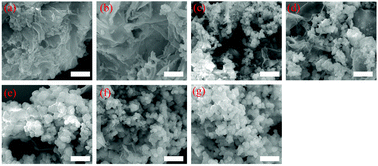Synthetic control of the polar units in poly(thiophene carbazole) porous networks for effective CO2 capture†
Abstract
Herein we present a rational strategy for the design of a porous organic structure based on conjugated microporous polymers (CMPs), aiming for the super absorption of CO2. The porous skeleton netted with thiophene- and carbazole- polar building blocks exhibits a synergistic effect on the absorption of CO2; the polar moiety facilitates the interaction between CO2 and the porous materials, and the high surface area provides a large interface. Among them, the task specific copolymer SN@CMP-6, exhibits a superior CO2 uptake at 1.05 bar and 273 K (86.46 cm3 g−1). All of the copolymers show high isosteric heats of CO2 adsorption (38.6–59.8 kJ mol−1).



 Please wait while we load your content...
Please wait while we load your content...